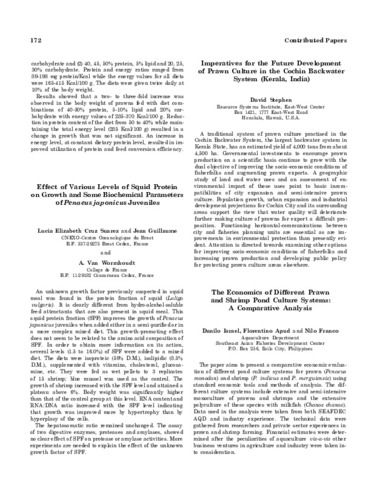Imperatives for the future development of prawn culture in the Cochin backwater system (Kerala, India)
- Global styles
- MLA
- Vancouver
- Elsevier - Harvard
- APA
- Help
Share
Abstract
A traditional system of prawn culture practised in the Cochin Backwater System, the largest backwater system in Kerala State, has an estimated yield of 4,000 tons from about 4,500 ha. Governmental investments to encourage prawn production on a scientific basis continue to grow with the dual objective of improving the socio-economic conditions of fisherfolks and augmenting prawn exports. A geographic study of land and water uses and an assessment of environmental impact of these uses point to basic incompatibilities of city expansion and semi-intensive prawn culture. Population growth, urban expansion and industrial development projections for Cochin City and its surrounding areas support the view that water quality will deteriorate further making culture of prawns for export a difficult proposition. Functioning horizontal-communications between city and fisheries planning units are essential as are improvements in environmental protection than presently evident. Attention is directed towards examining other options for improving socio-economic conditions of fisherfolks and increasing prawn production and developing public policy for protecting prawn culture areas elsewhere.
Description
Abstract only.
Suggested Citation
Stephen, D. (1985). Imperatives for the future development of prawn culture in the Cochin backwater system (Kerala, India) (Abstract only). In Taki Y., Primavera J.H. and Llobrera J.A. (Eds.). Proceedings of the First International Conference on the Culture of Penaeid Prawns/Shrimps, 4-7 December 1984, Iloilo City, Philippines (p. 172). Iloilo City, Philippines: Aquaculture Department, Southeast Asian Fisheries Development Center.
Type
Oral presentationISBN
9718511008



